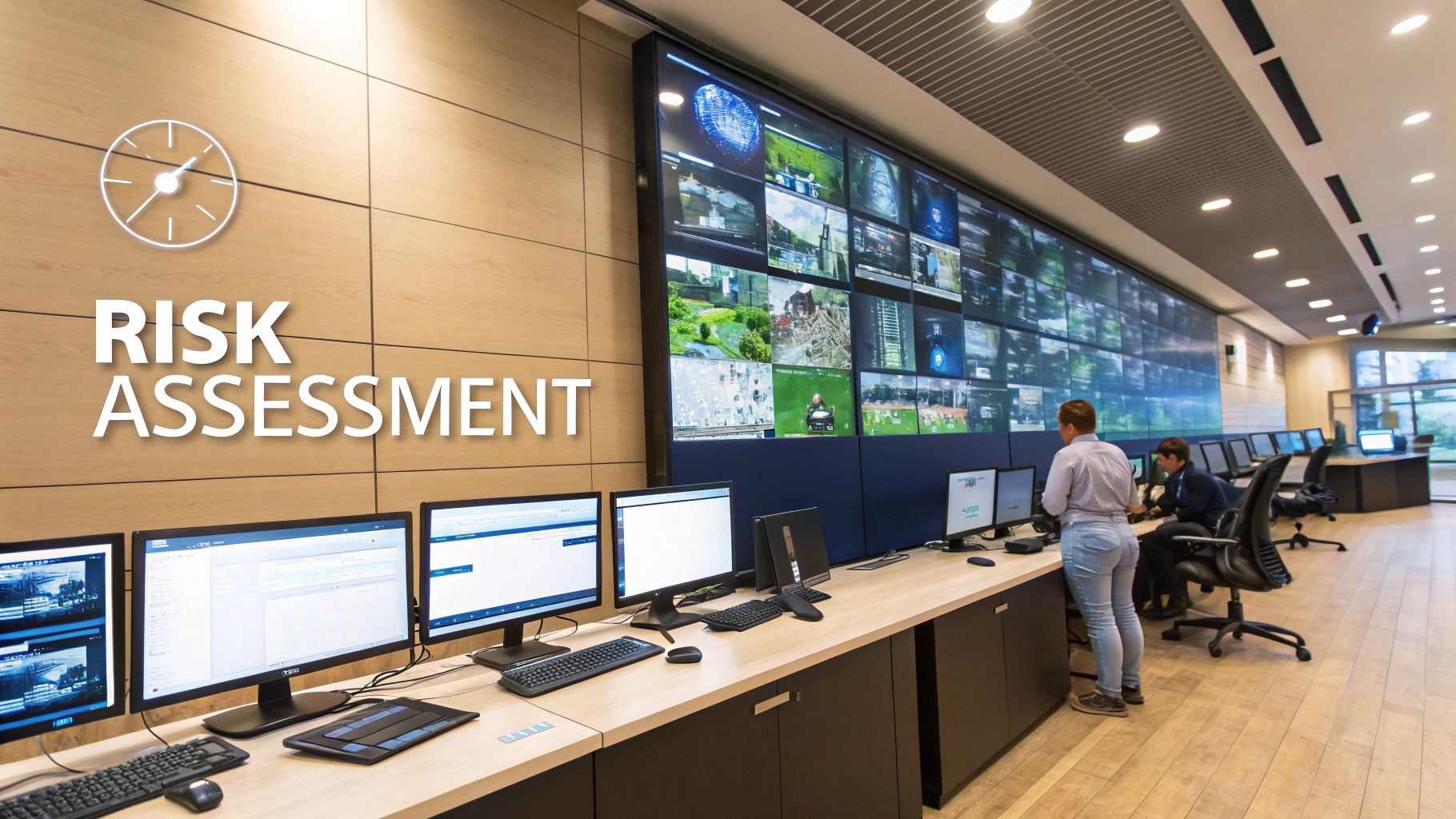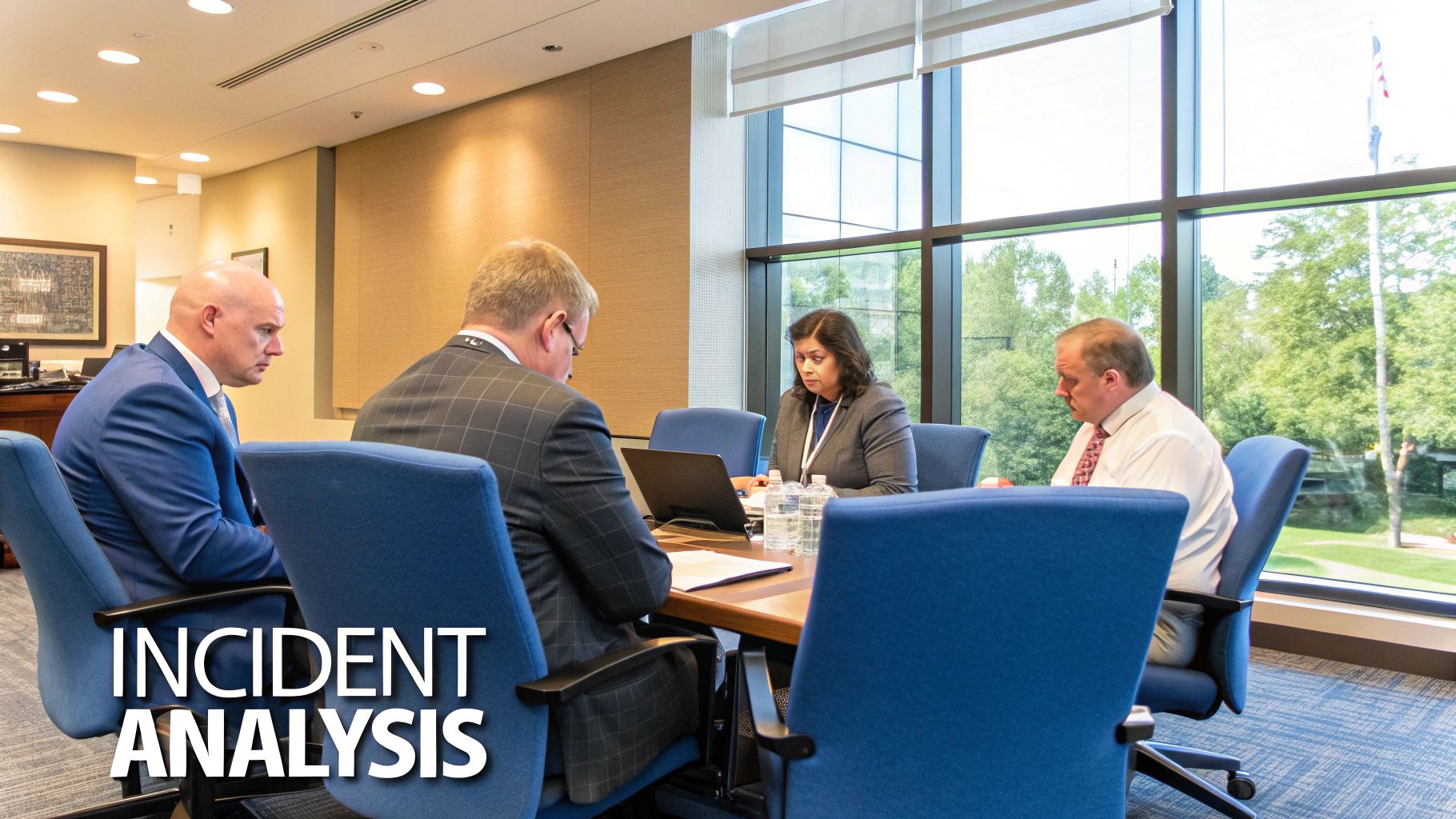Complete Guide to Incident Response Planning: From Strategy to Implementation
Understanding The Modern Incident Response Landscape
Cyber threats have grown increasingly complex and frequent, making strong incident response planning more critical than ever. Yet many companies still struggle to develop and maintain effective response capabilities. This raises an important question – what makes incident response planning so challenging in practice?
The Cyber Insurance Gap
Many organizations mistakenly believe that having cyber insurance means they're fully protected. While insurance helps cover financial losses after an incident occurs, it does nothing to prevent attacks or limit their impact as they unfold. Think of it like having car insurance but never learning defensive driving – you're covered financially after a crash, but the damage is already done.
The numbers tell a concerning story: only 45% of companies have incident response plans in place, while 79% carry cyber insurance. However, companies that do have response plans are more likely to also have insurance coverage – 88% of organizations with incident response plans also maintain cyber insurance policies. For more detailed data, see Learn more about incident response statistics.
Key Components of Effective Incident Response
Strong incident response requires more than just documentation – it needs to be a living framework that evolves with changing threats. Any solid plan should include these essential elements:
- Preparation and Prevention: Actively identify potential vulnerabilities and strengthen security controls before incidents occur
- Detection and Analysis: Deploy tools and processes to quickly spot and assess suspicious activity
- Containment, Eradication, and Recovery: Have clear steps to isolate affected systems, remove threats, and restore normal operations
- Post-Incident Review: Conduct thorough analysis afterward to capture lessons learned and improve future response
Building a Culture of Response
Beyond the technical components, organizations need to build response capabilities into their culture. This means ensuring everyone knows their role during a security incident through regular training and practice.
Just like fire drills prepare people to evacuate safely, incident response drills help teams practice their procedures under pressure. Regular exercises expose gaps in plans and build the muscle memory needed for effective response. Taking this proactive approach helps organizations stay ready and minimize the impact when real incidents strike.
Building A Mature Response Framework That Actually Works
Creating an effective incident response framework requires moving beyond basic checklists and compliance requirements. Leading security teams now focus on building practical, adaptable response capabilities that work under real-world pressure. Let's explore the key elements that make response frameworks successful.
Assessing Your Maturity Level
Before making improvements, you need an honest assessment of your current incident response planning. Take a close look at your procedures for detecting, containing, and recovering from security events. Ask questions like: How well do these processes work in practice? Are they tested regularly? Does your team have the right training to handle emerging threats? This evaluation helps identify gaps and prioritize the most important fixes.
Establishing Clear Roles and Communication
When incidents occur, everyone needs to know their exact role and responsibilities. Team members should understand both their individual tasks and how they fit into the bigger response effort. But defined roles alone aren't enough – you also need solid communication channels. This includes specific protocols for reporting incidents, escalating serious issues, and keeping management and stakeholders informed throughout the response.
The Power of Automation and Expertise
Modern incident response works best when it combines smart automation with human expertise. Security tools can handle initial threat detection and containment steps, freeing up analysts to focus on complex investigation and strategy. For example, automated systems might quarantine suspicious files while experienced team members determine the root cause and recommend long-term fixes.
From Plans to Actionable Roadmaps
Many organizations struggle to turn their response plans into real capabilities. According to Ponemon research, 77% of companies lack a formal incident response plan that works across their organization. Of those with plans, only 32% rate their program as mature. For more context, see these statistics from CrowdStrike's Incident Response Guide. The solution is focusing on practical implementation through clear roadmaps. This means scheduling regular training and drills, practicing response procedures, and continuously improving based on lessons learned from real incidents. Regular evaluation helps teams stay sharp and adapt to new threats.
Learning From High-Stakes Incident Response Scenarios
When a major security incident hits, your response plan faces its ultimate test. Studying real-world cases – both successes and failures – provides essential insights that no amount of theoretical planning can match. Let's explore what happens when incident response moves from paper to practice.
Analyzing Successes and Failures
Real incidents tell compelling stories about what works and what doesn't. For instance, some organizations have successfully contained ransomware attacks through quick isolation of affected systems – showing how speed and proper network controls make a difference. Others have lost critical data by hesitating or lacking proper backups. These contrasting outcomes highlight clear lessons about preparation and decisive action.
Decisions Under Pressure
Major incidents force teams to make tough calls with incomplete information. Looking at how different organizations handled these moments reveals important patterns. Did they correctly prioritize their response steps? How well did team communication hold up? Were escalation procedures followed? These questions help shape more effective training and preparation.
Testing Assumptions
Plans often rest on assumptions that real incidents can quickly disprove. A team might assume certain communication tools will be available, only to find them disabled during an attack. Or recovery time estimates prove far too optimistic once systems are actually down. The 2015 BlackEnergy attack on Ukrainian power grids showed this clearly – taking down three grids in just 30 minutes, far faster than expected. Learn more about this watershed incident in the detailed Ukraine cyberattack timeline.
From Theory to Practice
Having a solid response plan matters only if teams can execute it effectively when it counts. Key factors that determine success include:
- Team Coordination: How smoothly different groups work together during the crisis
- Communication Flow: Whether key stakeholders stay properly informed
- Resource Management: Having the right people and tools ready when needed
- Technical Response: Whether security systems perform as expected
By studying how these elements play out in actual incidents, teams can strengthen their plans, improve their training, and build better response capabilities. This helps close the gap between theoretical preparation and practical execution.
Bringing Your Response Plan to Life
Having a detailed incident response plan is just the first step. The real challenge lies in turning that plan into an effective response capability through proper training, practice, and ongoing refinement. Let's explore how to make your incident response plan fully operational.
Building a Well-Trained Response Team
Your team's ability to execute the plan makes all the difference when incidents occur. Each team member needs to thoroughly understand their role and master the tools they'll use during a response.
- Role-Based Training: Focus training on each person's specific responsibilities. Technical teams need deep knowledge of security systems, while communications teams must excel at clear, timely updates.
- Full Team Reviews: Schedule regular plan walk-throughs so everyone understands how their role fits into the bigger picture.
- Hands-On Practice: Give team members plenty of time to work directly with key security tools and systems they'll need during incidents.
Running Effective Practice Sessions
Regular drills help your team build the muscle memory and confidence needed to handle real incidents. Start simple and gradually increase complexity as the team improves.
- Discussion Exercises: Begin with tabletop scenarios where the team can talk through responses without time pressure.
- Realistic Scenarios: Progress to simulated attacks that test the full incident response process.
- Random Tests: Mix in unexpected drills to see how well the team performs under real-world conditions.
Working Through Common Roadblocks
Making your plan operational often means dealing with practical challenges. Here's how to handle the most frequent issues:
- Limited Resources: Show the value of incident response planning by calculating potential costs from downtime and breaches.
- Getting Support: Help stakeholders understand their critical role in successful incident response.
- Keeping Focus: Set a regular schedule for drills and training to maintain skills and engagement.
Tracking and Improving Results
Measuring performance and making adjustments is essential for building an effective response capability. This ongoing process helps your plan evolve to meet new challenges.
- After-Action Reviews: Study what worked and what didn't after each incident or drill. Use these insights to strengthen your incident response planning.
- Key Measurements: Monitor metrics like detection and recovery times to spot areas needing improvement.
- Regular Updates: Keep refining your plan based on lessons from practice sessions and real incidents.
By focusing on thorough training, realistic practice, problem-solving, and continuous improvement, you can develop a response capability that truly protects your organization when needed most.
Maintaining And Testing Response Capabilities
Having a solid incident response plan on paper is just the start – keeping it effective requires ongoing work and practice. Like any critical skill, your response capabilities need regular exercise to stay sharp and reliable when you need them most.
The Importance of Regular Testing
Testing your plan frequently helps prove what works and spots weaknesses before a real crisis hits. As threats keep evolving, last year's approach may not cut it against new attack methods. Regular drills build the muscle memory your team needs to act decisively under pressure.
Designing Realistic Tabletop Exercises
Tabletop exercises let you test your incident response planning safely without disrupting operations. The key is creating realistic scenarios that match your specific risks – a bank might practice handling ransomware targeting customer data, while a hospital focuses on patient record breaches. These exercises push teams to work through tough decisions and communication challenges in a low-stakes environment.
Conducting Thorough After-Action Reviews
Every exercise and real incident needs a detailed after-action review to learn what happened and improve. Focus on finding system-level issues rather than blaming individuals. For example, if teams struggled to coordinate during a drill, you might discover you need clearer escalation steps or dedicated communication channels.
Incorporating Lessons Learned into Plan Updates
Put insights from testing and real incidents to work by updating your response plan. This keeps it current as threats change. You might need to revise procedures, adjust roles, or add new security tools. If an exercise reveals gaps in how you contain threats, update the plan with stronger system isolation steps. This cycle of testing, reviewing and improving builds better response capabilities.
Balancing Routine and Surprise
While scheduled drills build core skills, unexpected scenarios test how well teams can adapt. Mix surprise elements into tabletop exercises or run unannounced drills simulating real incidents. This develops the flexibility needed to handle various threats effectively.
Measuring Response Effectiveness
Track clear metrics to show how your incident response planning delivers value. Key measures include detection and containment speed, data loss amounts, and recovery costs. Regular monitoring helps spot trends, prove improvements work, and justify continued investment. This data-driven approach builds confidence in your program's impact.
Action Plan: Your Roadmap To Response Readiness
A strong incident response plan requires putting theory into practice. Let's explore practical steps and milestones to help you build effective response capabilities, no matter where your organization currently stands.
Prioritizing Action Items Based on Maturity
Every organization has different starting points and needs when it comes to incident response planning. The key is matching your approach to your current capabilities.
For organizations just starting out, focus first on building a core team, defining basic roles, and documenting common incident types. Set a goal to have fundamental processes in place within 3 months. Those with established programs can work on formalizing communication channels, implementing security tools, and running regular practice exercises over 6-12 months. Advanced teams should look to automate key responses, add threat intelligence, and conduct complex simulations within a year.
| Maturity Level | Key Actions | Timeline | Success Metrics |
|---|---|---|---|
| Early | Form core team, define roles, document basic plan | 3 Months | Documented plan, assigned team members |
| Intermediate | Formalize communication, implement basic tools, run tabletop exercises | 6-12 Months | Documented playbooks, quarterly drills |
| Advanced | Automate responses, integrate threat intel, run advanced simulations | 1 Year | Automated alerts, advanced analytics, red team testing |
Securing Resources and Building Support
Getting buy-in across your organization is essential for effective incident response planning. Here's how to build that support:
- Show the financial benefits of faster incident containment and less downtime. Use real examples from your organization or industry data to make your case.
- Get legal, HR, PR and other key teams involved early. Help them understand how their input helps minimize incident impact.
- Keep leadership updated on progress through clear metrics like improved response times and reduced system outages.
Implementation Timeline and Pitfalls
Taking a step-by-step approach helps avoid common problems:
The first 1-3 months should focus on assessment and building your core plan. Don't try to tackle everything at once – start with the basics. From months 3-6, implement key tools, train your team, and run basic exercises. Make training an ongoing priority, not a one-time event. In months 6-12, start automating processes and refining your playbooks based on what you learn from exercises. Stay flexible and adjust your approach based on real experience.
Tracking Progress and Demonstrating Success
Track these key metrics to measure how well your incident response planning is working:
- Mean Time to Detect (MTTD) shows how quickly you spot potential issues. This number should drop as your detection improves.
- Mean Time to Contain (MTTC) measures how fast you can stop incidents from spreading. Faster containment means less damage.
- Number of Incidents tracked over time can show if your prevention efforts are working, though this shouldn't be the only measure of success.
By following these practical steps and constantly improving, you can build incident response capabilities that truly protect your organization.
Ready to improve your debugging and development process? Learn more about how DebugBar can help.



